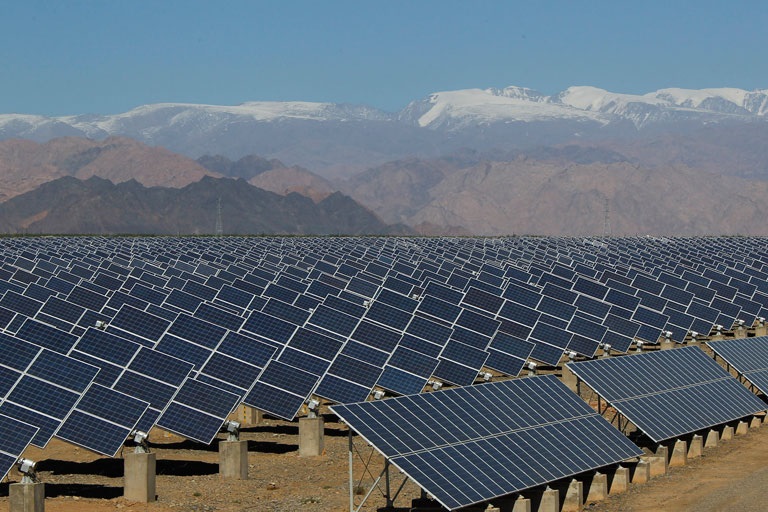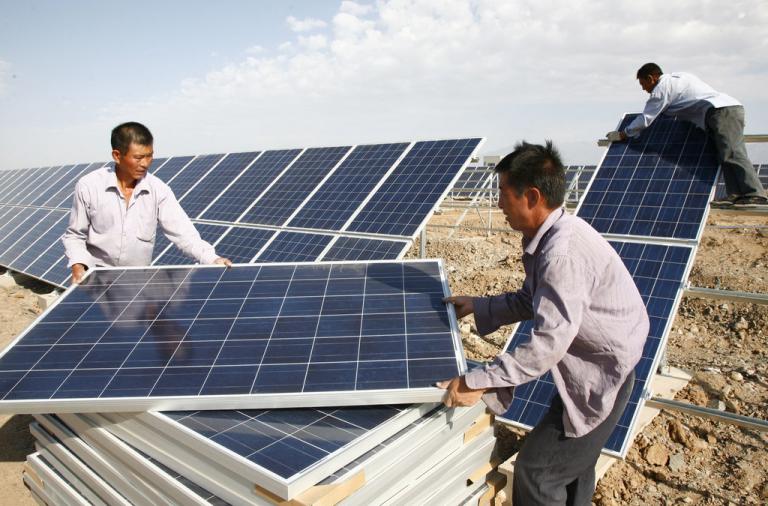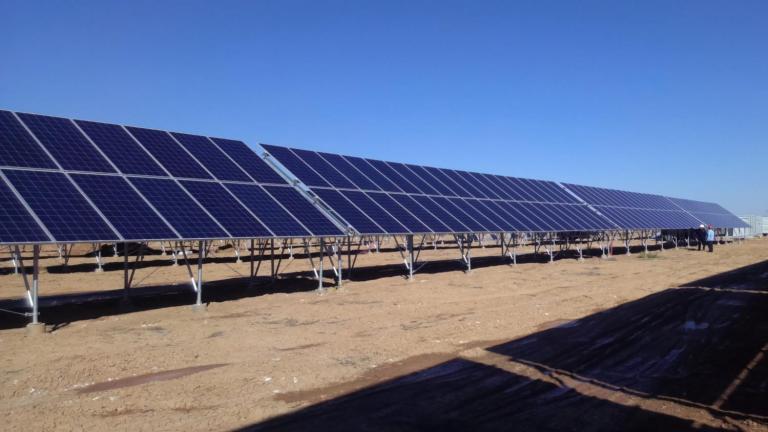Solar energy in xinjiang
4 min readSun shining all over the world and everything growing vigorously, there is inexhaustible light and heat energy in Xin jiang.
The solar energy in Xin jiang is extremely abundant with long annual sunlight time and sunshine percentage 60%~80%. In Xinjiang, every year there is 250~325 days when sunshine lasts for more than 6 hours, and its annual sunshine hour number is up to 2,600~3,400, much higher than the average level in China. The annual total radiation quantity of solar energy in Xin jiang is 5,500~6,600 MJ/m², ranking the second in China, which has the great potential for resources exploitation.

In terms of the distribution of solar energy resources, the peak value of solar energy in Xin jiang occurs in the area of Eastern Xin jiang and the east of Southern Xinjiang, while low value occurs in Bortala, the Altai Mountains and part of the areas at the north foot of Tianshan Mountains. The distribution of annual total radiation roughly distributes in uneven progressive decrease from the southeast to the northwest, with the radiation peakvalue normally distributing in the area of Kumul. The annual total radiation quantity in Kumul District is 6,400 MJ/m2, in Southern Xin jiang normally 6,000~6,200 M.J/m2and in Northern Xin jiang 5,200~5,600 MJ/m2. The best seasons to take advantage of the solar energy in Xinjiang are summer and autumn. In Southern Xinjiang, there is much sandstorm and floating dust in spring while in Northern Xinjiang, the temperature is low and it is very foggy, which are two disadvantageous factors in utilization of solar energy.
Of the total solar radiation quantity in Xinjiang, the photosynthetically active radiation, which can be absorbed by the crops, is 3,300~2,500 M.J/m2from the south to the north, while in Southern Xin jiang and Eastern Xinjiang 2,700~3,100 M.J/m-and in Northern Xinjiang 2,500~2,800 MJ/m2, which is much higher than that of 2,300 M.J/m2 in Northern China, the middle and lower reaches of the Yellow River in South China and 2,500 M.J/m2in Northeast China. The regional distribution of photosynthetically active radiation is the same as the distribution of the total solar energy radiation quantity.
Around June solstice, the sunshine duration at the daytime in Xin jiang reaches to 14 to 16 hours. During the growth season of crops(April to September), the sunshine duration is 1,400~1,940hours, and Kumul shares the most while Hotan shares the least; and which is more in Northern Xin jiang than that in Southern Xin jiang. The annual sunshine percentage is 60%~80% and the maximum value occurs in cool September and October. The abundant sunshine is very advantageous for the agricultural production in Xinjiang.

Xin jiang is vast with large altitude differences in terrain, thus the distribution of solar energy is of great differences. There is the most abundant solar energy in Turpan Basin, where the accumulated temperature above 10℃ reaches to 4,500℃~5,400℃; and then Tarim Basin, the accumulated temperature above 10℃ reaches to over 4,000℃; in Northern Xinjiang, Junggar Basin and Ii Valley reserves the most abundant solar energy, the accumulated temperature above 10℃ is up to 3,000℃~4,000℃; in Altai Region and Tacheng Basin, the accumulated temperature above 10℃ is up to 2,860℃~3,050℃. The temperature between summer and winter differ greatly which can meet the needs of multiple crops. In spring, the temperature rises rapidly, so it is good for the rapid growth of early crops; in autumn, the temperature drops rapidly, it tends to cause low temperature damages, which influences the yield and quality of crops. The frost free period in Northern Xinjiang is longer than that in Southern Xinjiang, in plains longer than in mountainous areas, presenting a distribution trend of gradual increase from the north to the south and gradual extension from high to low. In terms of latitude, shifting southwards by each degree means the average frost free period will be increased by about 4 days. The actual frost free period for each year varies greatly which is about 1~1.5 months in variation in Northern Xinjiang,2months at most; and about one month in variation in Southern Xinjiang. Because frost free period is limited, chimonophilous crops can only in harvest once a year, even though the solar energy condition is good.
The temperature difference between day and night in Xin jiang is larger than that in thesame latitude in China. In Northern Xin jiang, the difference is 12℃~14℃ while in Southern Xinjiang,13℃~16℃. The daily temperature difference in summer is the largest while in winter is the smallest. This difference between summer and winter in Northern Xin jiang is larger than that in Southern Xin jiang, and it is even larger in the regions close to the center of basins. The condition with large daily temperature difference is quite advantageous for the quality and yield of crops.
In addition, in winter the”cold lake”influence of the two big basins in Xin jiang makes the mountain temperature inversion obvious; the center of the north slope of Tianshan Mountains is 5℃~8℃which is higher than that of the basin. The mountain temperature inversion resource is very advantageous for growing fruit trees, exploiting the winter range and growing the early-maturing or late-maturing crops.
The sunshine in Xin jiang is extremely strong. When the costs of photovoltaic power generation of solar energy reduce greatly, photovoltaic power generation could become a rapidly-developing new energy industry after wind power, and can take certain share of power grid. The prospect of solar energy in Xinjiang is very promising, while the abundant sunshine and accumulated temperature create advantageous conditions for the growth of crops and pasture.









